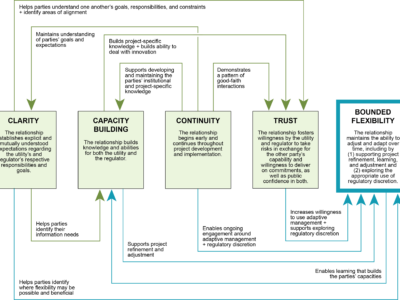water quality regulation
The role of regulatory relationships in wastewater innovation
by Nell Green Nylen, Michael Kiparsky, and Anita Milman
Public water and wastewater utilities are increasingly struggling to meet society’s expectations. Their basic infrastructure is aging, budgets are tight, and they face a barrage of stressors, from population growth to climate change and shifting regulatory expectations. What’s more, in addition to performing their traditional function of protecting human health and water quality, many wastewater …
Continue reading “The role of regulatory relationships in wastewater innovation”
CONTINUE READING




